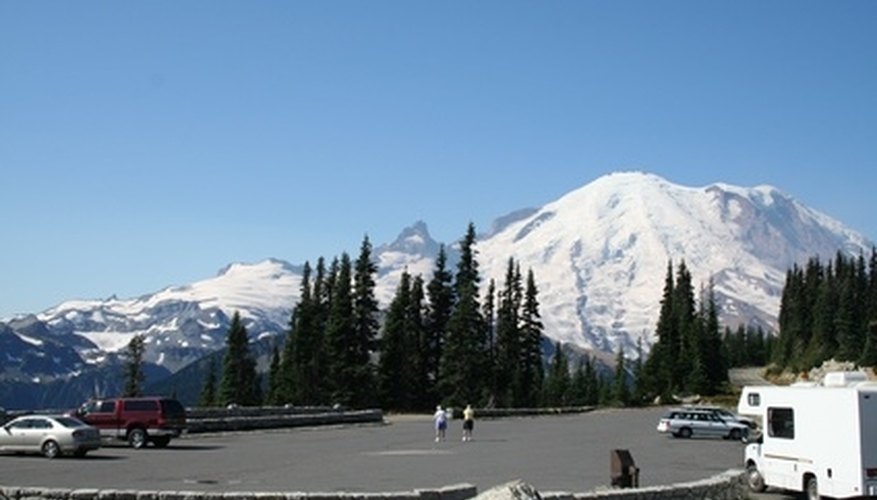
The contents of RV holding tanks will freeze during cold weather if preventative measures are not taken. Freezing results in leaking waste water tanks, which leaves an unpleasant mess to clean up. Frozen holding tanks can rupture. Ruptured tanks are expensive to replace. If the RV is used for winter camping, insulating the undercarriage of the RV with foam board when the rig is parked will help prevent tanks from freezing. To thaw a frozen tank, access to electricity and above-freezing temperatures is required.
Items you will need
Disposable gloves
Safety goggles
Blow dryer
Rags
Move the RV into a protected space where temperatures are above freezing, such as a garage. Use rags to wipe away any dirt or insects that are on the holding tanks. Put on gloves and safety goggles when working with black-water and gray-water tanks.
Use a blow dryer to slowly thaw the RV holding tank. Hold the blow dryer six to 12 inches away from the tank. Slowly pass the blow dryer back and forth over the entire exposed area of the tank. Repeat several times to unfreeze the tank. Check for cracking or leaking from the tank or waste lines.
Check all of the holding tanks for freezing. There are three tanks that are of concern: the black-water holding tank, which holds waste water from the toilet; the gray-water tank, which holds waste water from sinks and showers; and the freshwater tank. The waste tanks are located next to each other under the RV. A freshwater tank is located under the RV, usually opposite the waste tanks.
Use rags to wipe off the tanks as they thaw. Condensation will form on the outside of the tanks; this is normal. By wiping away the condensation, it is easier to tell if the tank is leaking.
Drive the RV to a dumping station once the tanks are unfrozen. Empty the tanks, starting with the black-water holding tank. Winterize the tanks by adding non-toxic RV antifreeze to the waste and water systems prior to returning the rig to storage.
Tips
- Installing a tank-heating system and insulating the pipes in an RV will prevent freezing of the holding tanks. They also will allow for worry-free winter camping.
- Prior to storing the RV for the winter, empty the holding tanks and remove all water from the system with compressed air.
References
- Trailer Life's RV Repair & Maintenance Manual; 4th Edition; Bob Livingston; 2002
Tips
- Installing a tank-heating system and insulating the pipes in an RV will prevent freezing of the holding tanks. They also will allow for worry-free winter camping.
- Prior to storing the RV for the winter, empty the holding tanks and remove all water from the system with compressed air.
Writer Bio
Lynda Altman started writing professionally in 2001, specializing in genealogy, home-schooling, gardening, animals and crafts. Her work has appeared in "Family Chronicle Magazine" and "Chihuahua Magazine." Altman holds a B.A. in marketing from Mercy College, a black belt in taekwondo, master gardener certification, a certificate in graphic arts and a certificate in genealogy.



